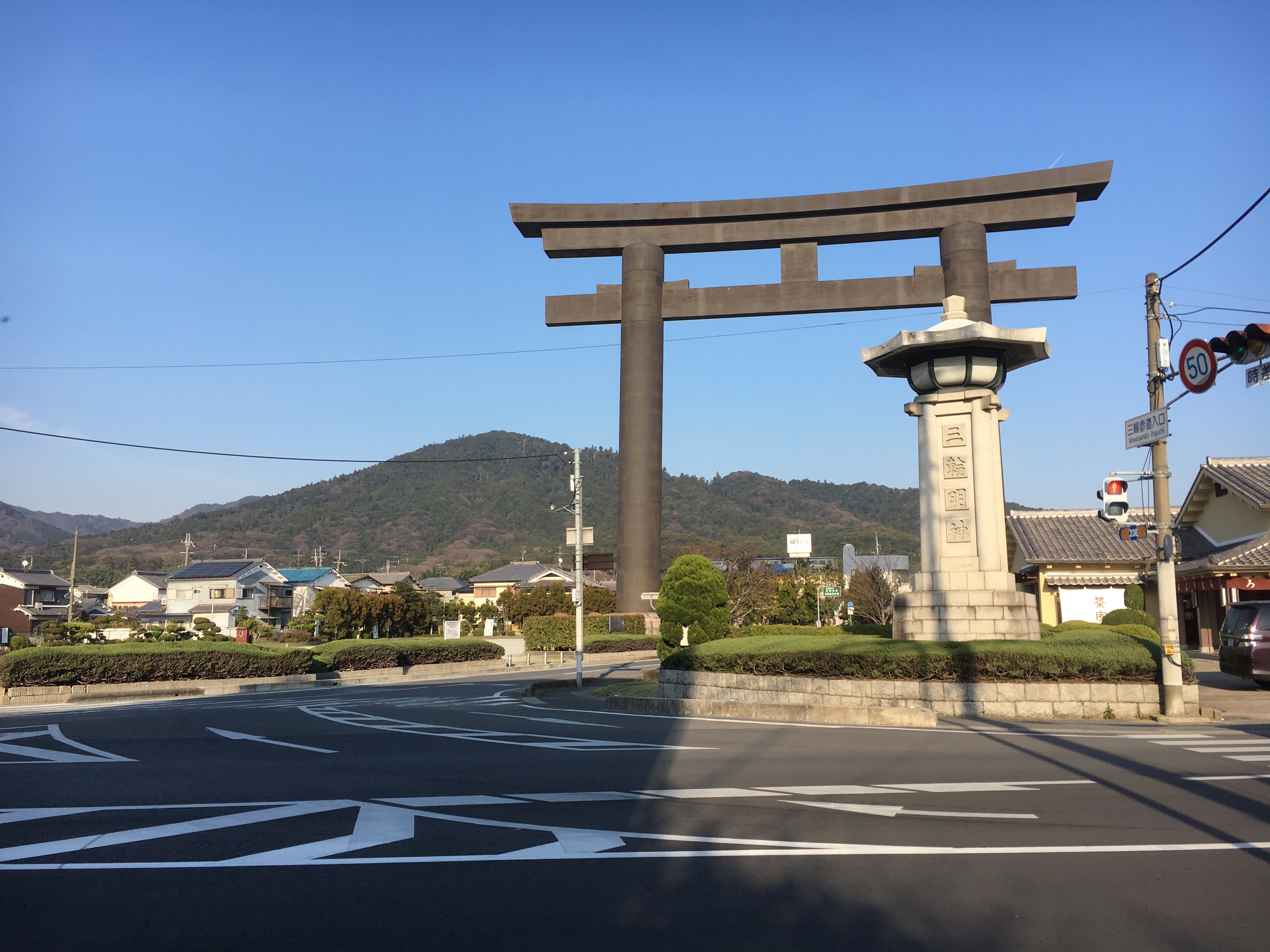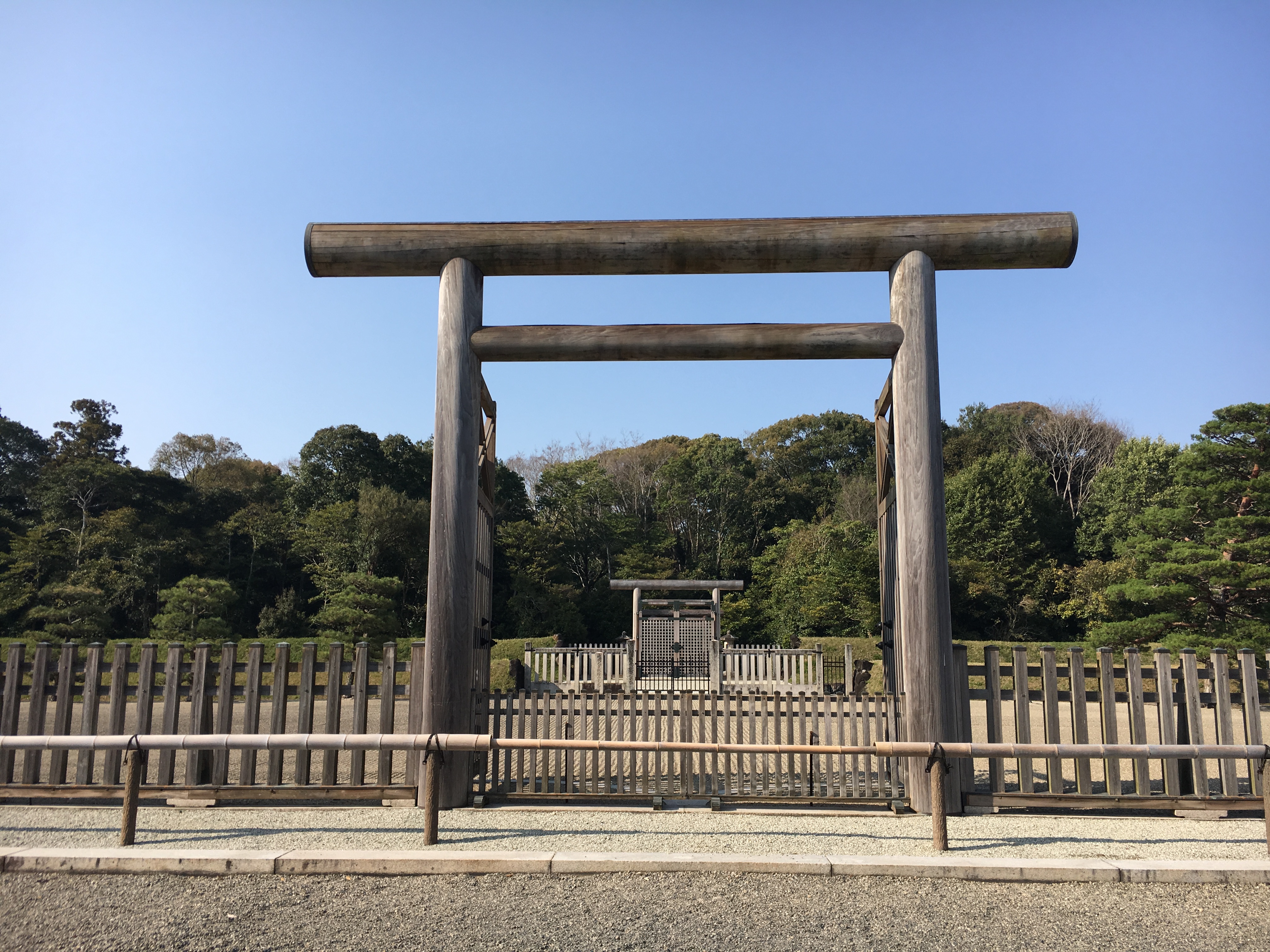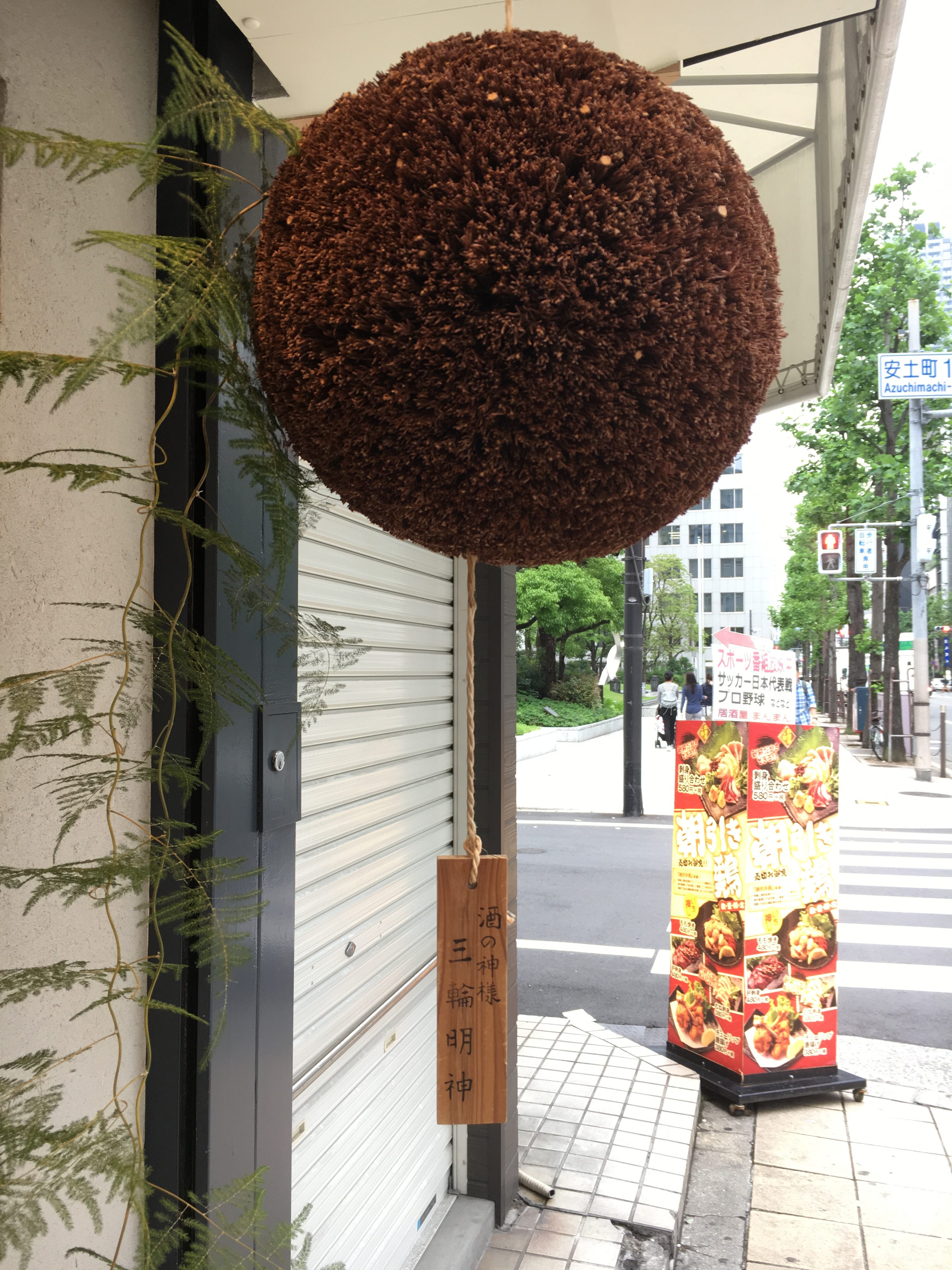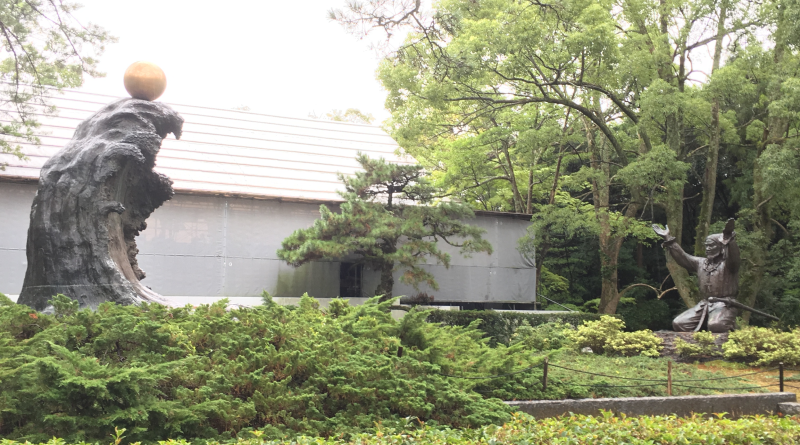Oh Gods! The Tales of Omononushi
Which mountain is the most sacred in Japan? Most people would probably assume that Mt. Fuji is the most sacred mountain in Japan, after all, it certainly is the most iconic mountain in Japan and recently became a World Heritage site. While it is true that the beautiful Mt. Fuji is very near and dear to the hearts of the Japanese people, in terms of Shinto beliefs, it may not be that sacred. It is not as though the ancient people of Japan didn’t know Mt. Fuji existed (it is rather hard to miss), but for some reason it seems they did not think anything particular about Mt. Fuji. The Kojiki never even mentions the mountain— not even in the legend of Yamato Takeru, who while conquering East Japan, surely would have passed in front it.
So let’s rephrase that question: which mountain is the most sacred according to Japanese mythology? In that case the answer to that question is clearly Mt. Miwa, home of Omononushi [大物主], a very important and influential god in Japanese mythology.

The Tales of Omononushi
Unless otherwise marked (*) the following stories about Omononushi are from the Kojiki, but some important ones from the Nihon Shoki here as well. Also some of the names of these characters are really long. After introducing the full name, we will use a shortened version as denoted by ().
The Birth of Omononushi
Omononushi’s first appeared in the Kojiki was when Okuninushi was trying to create Japan. Read the story here. Since Omononushi helped Okuninushi create the country, Okuninushi, in return, enshrined Omononushi in Mt. Miwa. However, the relationship between Okuninushi and Omononushi is quite a mystery.
The Kojiki says Omononushi and Okuninushi are different gods, but according to Omiwa Shrine, Omononushi is the harmonious soul of Okuninushi. Contrarily though, according to the Nihon Shoki, Omononushi and Okuninushi are basically the same god. Despite Okuninushi enshrining him in Mt. Miwa, Omononushi still had a number of adventures in the Kojiki, and much like his counterpart Okuninushi, was very partial to women.
The Tale of the Magic Arrow
Once upon a time, Omononushi caught sight of a lovely maiden named Princess Seyadatara [勢夜陀多良比売]. She was so breath-taking that Omononushi instantly feel in love with her. Omononushi decided to seduce the beautiful princess, and turned himself into an arrow and floated down the river to where he knew the princess enjoyed taking her walks. When Princess Seyadatara went down the river, she saw an arrow floating towards her. Intrigued, she picked the arrow up and took it home with her. When she placed the arrow down on the floor in her chamber, it suddenly turned into a handsome man.
The couple were wed soon after that, and they had a girl named Princess Hime-tataraisuke-yori [比売多多良伊須気余理](Isuke-yori), sometimes called Hoto-tataraisusuki [富登多多良伊須須岐].
Many years later, Kamuyamato-iwarebiko-no-mikoto [神倭伊波礼毗古命] (Kamuyamato), better known as Emperor Jinmu the first emperor of Japan, set out from his home in Takachiho (what is present day Miyazaki Prefecture) to conquer the eastern side Japan. His journeys were rather perilous, and he fought many enemies along the way. Once Kamuyamato arrived Nara, he became the first emperor in Kashihara, Yamato. After becoming emperor, he set about looking for the right person to become his first wife, despite already having several wives.

Eventually, Kamuyamato heard a rumor about a girl who just might fit the bill, who lived near Kashihara: Princess Isuke-yori. Upon learning the girl’s unusual conception, Kamuyamato realized she was the daughter of Omononushi! Seeing as how it is rather hard to top “child of a god”, and she was indeed very beautiful, Kamuyamato decided to marry Princess Isuke-yori, thereby making Omononushi the father-in-law of the first emperor of Japan.
The Tale of the Red String
Once upon a time, there lived the lovely Princess Ikutamayori [活玉依毗売]. Every night, Princess Ikutamayori was visited by a mysterious and handsome lover. Eventually, Ikutamayori became pregnant and though her parents tried to catch this mystery man, they were never successful. One night, Ikutamayori’s parents were able to secretly tie a red string onto the cloak of their daughter’s lover. The next day, they followed the string, which led them straight to Mt. Miwa! Princess Ikutamayori’s parents concluded that their daughter’s lover was none other than Omononushi himself.
This is why the connection between two people (aka en-musubi) in Japan is often represented by a red string.
—
Many decades later, during the reign of the 10th emperor, Emperor Sujin, a horrible plague had taken hold of the land and many people were dying. One night, as Emperor Sujin slept, he had rather strange dream. In his dream, Omononushi appeared and told Sujin that if he appointed a man by the name of Otataneko [意富多多泥古] to be the head priest of Omiwa Shrine, the plague would abate. The next day Emperor Sujin immediately sent out a search for this “Otataneko” person.
It was not long before they found Otataneko and brought him before the emperor. Emperor Sujin asked Otataneko why Omononushi would insist that he should become Omiwa Shrine’s head priest. Otataneko explained that his great, great grandmother was Princess Ikutamayori. Upon learning that Otataneko was a descendant for Omononushi, Sujin quickly assigned him as the head priest of Omiwa Shrine.
After Otataneko became the new priest of Omiwa Shrine, Emperor Sujin commissioned the sake brewer Takahashi, to make a special batch of sake as an offering for Omononushi. The sake brewer made a very smooth, lovely sake. It was delicious that it became a favorite of Omononushi. Shortly thereafter, the plague disappeared from the land and the sake brewer was later enshrined in Omiwa Shrine as Takahashi-ikuhi-no-mikoto [高橋活日命] the god of sake, making Omiwa Shrine one of the most sacred places for sake production.*

The Tale Princess Momoso and the Mysterious Box*
Omononushi had yet again fallen in love with a beautiful princess, specifically, the daughter of the Emperor Korei, Princess Yamato-totohi-momoso [倭迹迹日百襲姫命](Princess Momoso). Each night Omononushi visited Princess Momoso, he always concealed himself in shadows, so she never knew the identity of her lover.
Momoso begged Omononushi to show her his face, until finally Omononushi relented and gave her a little box. He told her to wait until the following morning to look into the box and she would know his true identity. There was one condition however: that she must not be alarmed by what is in the box. Un-phased, Momoso took the box, promising not to open it till the following morning. When the princess woke up next morning, she eagerly opened the mysterious box. Inside, coiled up in a happy little ball, was a snake. Instantly terrified, Princess Momoso was so startled, she slipped and was unfortunately impaled through her genitals on a pair of chopsticks and died. She was buried in Hashihaka Kofun.

*The story of the sake brewer and the tale of Princess Momoso come from the Nihon Shoki.
Sacred Mountain
Since many believe Omononushi still dwells in Mt. Miwa, it is easy to see why Mt. Miwa is thought to be especially sacred. In fact, because this is the home of god, for many years Mt. Miwa was too sacred for people to enter. Luckily, this is no longer the case, and while there are a few restrictions, today anyone can walk up Mt.Miwa!


Leave a Reply